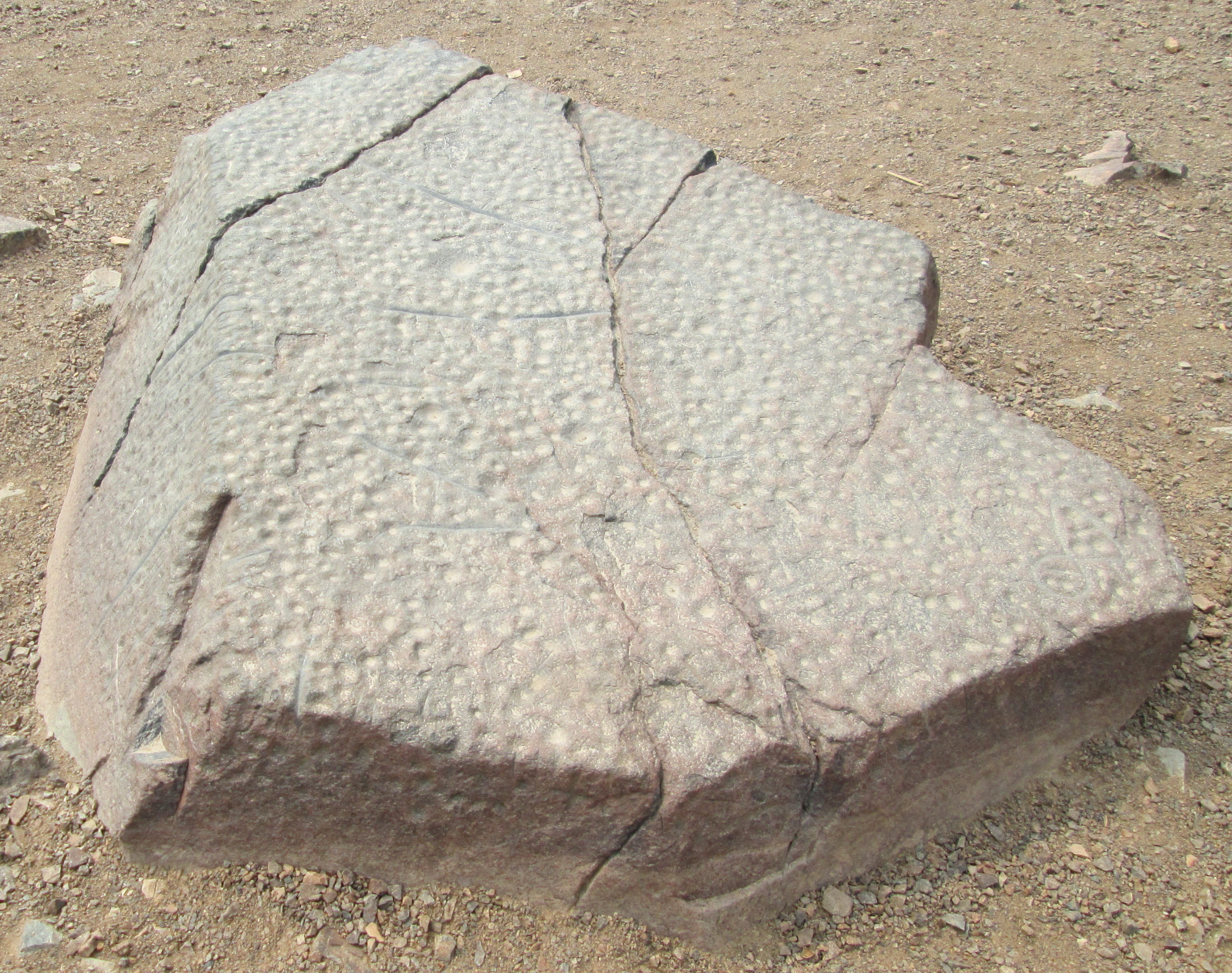Checta is one of the largest rock art sites in Peru, on a gentle hillside overlooking the valley of the river Chillon, a few hours from Lima. There is a small roadside sign, and you follow a steep rocky footpath up over a bank of stone before it levels along a ridge to where a field of boulders, large and small, occupies a terrace between the upper hillside and a dry ravine.
Dozens or hundreds of small boulders hold one or two designs, mostly abstract, crudely drawn on reddish brown rocks.There are however three great black rocks, a little apart. These have a multitude of cupules, round depressions in the rock, whilst the others are pecked to change the colour of the surface. This one variable, the manner of production. serves to distinguish between them. But they are different in so many more ways. The rock type used is different, hard, black and polished; the markings are deep and smoothed; the images are almost entirely circles and curving lines; the images face upwards towards the sky; the stones are massive; and the three stones are positioned some way from the rest of the group.

one of Checta´s three cupule rocks 2 metres long,
These three are outliers according to all these several variables, and very probably more. More simply, these three are powerful and timeless works of art, whereas much at Checta seems more akin to childrens’ crayonings.
Some valleys to the south, by the river Mala, are another series of petroglyphs. The most famous, at Calango, was recorded early when the Spanish authorities found a giant stone, laid flat, facing to the skies, covered in carvings. It is now surrounded by a wall with a padlocked cast iron door, built in 1990. The major keeps the key. What was public is now private. On the internal walls are an unfinished mural celebrating powerful individuals, six men, who had some hand in the recording and destruction of the stone. This is how history is written.
